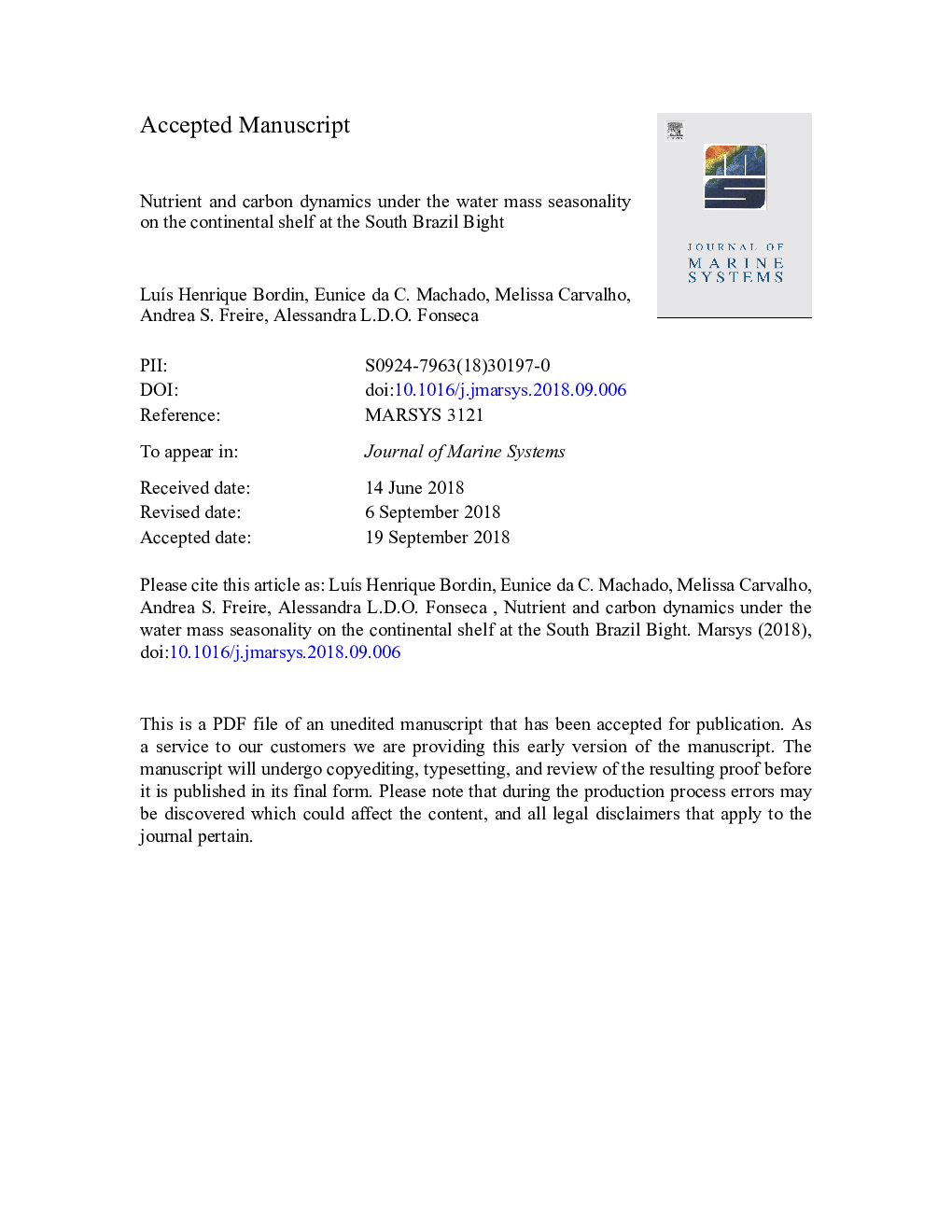| Article ID | Journal | Published Year | Pages | File Type |
|---|---|---|---|---|
| 10223865 | Journal of Marine Systems | 2019 | 53 Pages |
Abstract
The enrichment of the euphotic zone and the production of organic matter (OM) are induced by wind-driven processes that change the water mass distribution in the central inner and mid continental shelf of Santa Catarina State (27°18â²-27°37â²S), South Brazil Bight (23-28.5°S). During austral summer, the Ekman transport by north-eastern winds is balanced by onshore bottom intrusions of the nutrient-rich South Atlantic Central Water (SACW), while during austral winter, the Plata Plume Water (PPW) reaches the region, which is pushed northward by south-eastern winds. Between 2014 and 2016, six oceanographic campaigns were conducted at the isobaths of 30 and 50â¯m, one in the early fall of 2014, others in the summers of 2015 and 2016, and in each winter of the stated years. The aim was to investigate the spatio-temporal variability of nutrients (nitrateâ¯+â¯nitrite, ammonium, phosphate and silicate), and composition of the particulate organic matter (POM), i.e. particulate organic carbon and nitrogen, in relation to the water masses dynamics. In summer of 2015 and 2016, the SACW reached all over the bottom layers of the studied area, while in 2014, it only reached the outer stations. The SACW intrusion was reflected by relatively high phosphate (0.61â¯Â±â¯0.29â¯Î¼M), silicate (9.51â¯Â±â¯4.34â¯Î¼M), and notably high nitrate (4.21â¯Â±â¯2.83â¯Î¼M) concentrations. The POM composition revealed the deep chlorophyll-a maximum at intermediate and bottom layers, indicating new primary production associated with the nutrient-rich SACW. The denitrification was identified in bottom water by nitrogen loss (up to 9.66â¯Î¼M) associated with the low dissolved oxygen saturation (DO%) (53.07â¯Â±â¯7.8%). In winter, the PPW reached the region in the surface, especially in 2015 and 2016, with high silicate concentrations (8.36â¯Â±â¯2.46â¯Î¼M). Nitrate (1.69â¯Â±â¯0.92â¯Î¼M) and phosphate (0.46â¯Â±â¯0.23â¯Î¼M) were mainly related to regeneration processes in the bottom layers associated with low DO% (78.25â¯Â±â¯7.55%). In summer, the SACW presented higher potential for biological production against Subtropical Shelf Water (STSW), while in winter, the STSW was higher than the PPW. Besides the new nutrient supply associated with wind-driven water mass dynamics, the nutrients regeneration contributed to the food chain structure via a regenerated primary production.
Related Topics
Physical Sciences and Engineering
Earth and Planetary Sciences
Oceanography
Authors
LuÃs Henrique Bordin, Eunice da C. Machado, Melissa Carvalho, Andrea S. Freire, Alessandra L.D.O. Fonseca,
